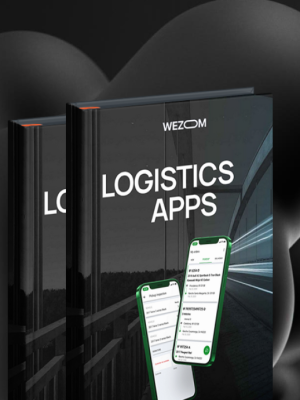Reverse logistics may sound unfamiliar to many, but nowadays, we are seeing this practice more and more. It contains its own characteristics and many advantages for companies, so it is essential to know what are the key aspects of this process, and how to use it so you can benefit from this type of logistics. As this procedure is a highly complex field, you can gain a lot from knowing all the details and various kinds of reverse logistics.
In this article, we will discuss reverse logistics, its evolution, how it is the intricacies of this process.
What Is Reverse Logistics?
Reverse logistics is a popular procedure, and it would be a mistake to assume that it only applies to returns. This type of logistics refers to the reverse approach to traditional logistics, in which the items are transferred from customers back to the beginning of the logistics flow.

Reverse logistics is a whole journey that starts from the final point of the supply chain, that is, from customers, and includes the transfer of goods to stores or other points in the supply chain. It includes such processes as returns, reselling, and recycling of items. Reverse logistics does not just refer to the transfer of goods, it includes many additional details like the sale of surplus or the management of processes.
In general, any process that occurs after the sale of the product refers to reversed logistics so we face it quite often. The process itself and all the operations it consists of depend largely on the characteristics of the product and the type of reversed logistics. In order to understand reversed logistics, you need to know the elaborate operations it includes, the challenges, and what benefits it can give.

An Introduction to the Landscape of What is Reverse Logistics
Nowadays, the whole field of reverse logistics is constantly developing, and it integrates into the realities of modern business even further. This is why knowing different components is important so we can study this field and use the processes that constitute it to benefit. Reverse logistics does not just refer to returns. It also includes processes like the reuse of packaging, repairs and maintenance, and also refurbishment of items. It is now a widely popular practice as more customers started to return goods due to an increase in demand in the field of eCommerce.
Since reverse logistics has a wide range of activities involved, it is difficult to even distinguish where this field ends and where it connects with other field. In addition, there are even different types of this approach to logistics. However, by using the various practices wisely, you can reap a number of benefits. There will be some limitations that you will inevitably face in your work, but the right strategy, good planning, and management will allow you to effectively cope. Reverse logistics requires regular monitoring for an efficient workflow. By constantly optimizing reverse logistics processes, you can help yourself a lot.

The Rise of Reverse Logistics in the eCommerce Freight
Reverse logistics has gained popularity as shoppers order more eCommerce services. At the same time, reverse logistics has very large volumes: the number of goods that are returned back from buyers to the original destination is underestimated and significantly affects the overall professional and financial performance of the whole industry. There is a lot to be gained by using this procedure wisely, so companies should invest in a well-optimized reverse logistics flow for their own good.
Companies are increasingly in need of reverse logistics processes. Not only is it a fairly sought-after procedure for the needs of many different companies and types of businesses, it also brings many bonuses such as increased efficiency. Also, many businesses can get significant benefits from the fact that, as a result of the effective use of reverse logistics, the efficiency of the supply chain also increases.
What is Reverse Logistics Flow vs. Traditional Logistics Flow?
In general, the traditional logistics flow refers to all of the processes that surround the flow of products from suppliers to a factory or a distributor, then to retailers, and, finally, reaches customers to satisfy their demands. In this flow, many different parts of the supply chain are involved.
The reverse logistics flow is usually defined as the same set of procedures, but which begins with customers, and, through retail stores and factories, reaches the starting point, that is, the original supplier.
Reverse logistics is often underestimated. It provides huge potential benefits if the supply chain is responsive to the potential changes in the processes. Some of the main advantages include valuable product data, reduced costs, and increased customer satisfaction, but the matter does not end there.
The Optimization of the Reverse Logistics Process Matters
Just as the traditional logistics flow, the reverse process includes processes like planning and management. A carefully thought-out strategy helps avoid delays and improve many processes. Reverse logistics flow can transfer the goods back to any point of the supply chain, even to regular sales.
Since the benefits of reverse logistics for business are underestimated, it must be remembered that the improved customer experience that it provides changes the entire performance of your business. In addition, such an important detail as the product information you receive during reverse logistics can give you important business insights. With such data, you can work on your results and the strengths and weaknesses of your business.
One of the important benefits of optimized reverse logistics processes is better supply chain visibility. However, the success of the company's performance may depend on different factors simultaneously, so reverse logistics should pay special attention. It can significantly affect the company's financial results.
In addition to the benefits, reverse logistics also has its own challenges that must also be taken into account in the process of implementation in order for your company to be protected from risks and be able to remain efficient. You need to ensure all the components that you will need in the process work well so that the procedure goes as smoothly as possible. Also, this process requires careful management and monitoring for everything to go well. Management is a challenging task so a company’s experience matters.
Conclusion
Reverse logistics is a complex and underestimated field that is important for the whole industry. The volume of goods in this field is much more than it might seem. It is becoming increasingly popular, and the costs of returns may constitute 3% to 50% of a different company’s revenue in all industries. A well-optimized procedure of reverse logistics gives the company huge potential, especially given the demand for eCommerce services, so this aspect is definitely worth paying attention to.
Firstly, a high level of customer satisfaction will have a beneficial effect on your finances and will be important for your reputation. Therefore, by focusing on various aspects related to reverse logistics, you will strengthen the position of your business in the market and receive many new financial and professional opportunities.
There are various approaches to optimizing the reverse logistics process, but in addition, it needs process control and overall organization. You need to consider both speed and possible costs. However, by improving your strategy, you can influence both your efficiency and your reputation and finances. Since this field is now becoming more and more popular, it is essential to remember both its importance and the fact that it can be easily enhanced and implemented in your activities.

